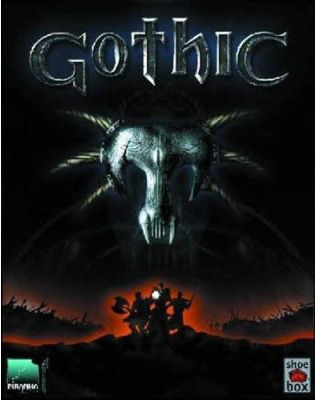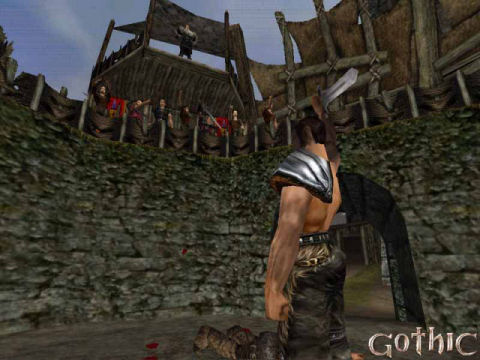In just two days, “Risen” will be on the store shelves. Risen is the inofficial child to the excellent Gothic series, a trilogy of role-playing games produced by german developer Piranha Bytes.
Because of this special opportunity, allow me to revel in ancient times and take a look back at the series’ previous games. I have played all parts so far, including all add-ons, with the exception of the publisher’s cannibalization attempt that is “Forsaken Gods” (which means I played exactly one Add-On, “Night of the Raven” :P).
In my opinion, no other game can compare to this series, no Elder Scrolls, no Baldur’s Gate and no Fallout. Read on to find out why I’m so addicted to the Gothic series :)

In 2001, an as of yet unknown developer named Piranha Bytes released a role playing game named “Gothic”. Never in my whole gaming life have I been so addicted to a game. What makes Gothic so special?

Gothic was all about immersion.
Other role playing games make you play a party of characters, present text windows for conversations and let you choose attacks from a list. All this creates a distance between the player and the character he’s supposed to identify with – the player takes on the mindset of managing a character, not being him.
In Gothic, you were your character.
- You always controlled one person and one person only: you.
- When you wanted to hit someone, you just pulled your sword and attacked – no dice throwing here.
- Absolutely everyone had voice-overs: when you talked to someone, you saw and heard them answer, instead of being notified what they were supposed to have said in a small text window.
- The world was continuous – you could travel everywhere and the game would never show a loading screen.
- You could go nearly everywhere. Instead of kiddy guardrails, the game let you explore. Of course, it was very possible you’d encounter something way out of your league, forcing you to flee (which you did, of course, not by clicking on a “flee” button, but by turning around and running for your life!)
- People were believable. Your quest givers weren’t automatons. They were unsure and discussed with you what might be the best thing to do instead of handing out instructions like a military commander.

Gothic had the best game world.
Gothic cleaned up with the depressing tunnel-crawling RPGs of its time were putting players through. Gothic took place on the surface of the world.
The countryside was beautifully sculpted. No generic height-mapped boredom where everything looks vaguely similar with randomly placed trees. The entire world was hand-made and each place had unique features, so you always recognized where you were and noticed if you walked in circles.
Not only was the world hand-sculpted, it was interesting. There were lush green meadows rolling along huge stone masses, where every now and then, you might discover a cave (often just a small cavernous holes, sometimes leading a few meters into the rock and very few deeper cave systems). There were rocky landscapes, swamps, mines, volcanous areas and all were individually designed part of one big world.
The developers didn’t even shy away from creating lush forests and using some clever tricks so that when you entered a large forest, you would eventually be surrounded by trees in every direction, not being able to see the end of it. And even the forests had well-sculpted terrain and some dangerous animals could sleep or lurk between the trees.
Finally, a large world for the Gothic developers meant a world with many interesting and unique features, vastly different settings and lots of places inviting you to explore. Not an auto-generated large-to-scale world were your main task is walking marathons to get to places.

Gothic avoided menial tasks.
You could carry as much as you wanted. No limits. Personally, I think that’s the best part about Gothic. Where’s the gameplay advantage about having to store your stuff in boxes here and there, run forth and back between two places to get all loot, having to backtrack a whole journey because you need something from your chest and so on? Repetitive realism instead of adventure?
The game also didn’t try to create a generic setting that catered to the average player’s needs. You were thrown into the game and eventually sided with one of 3 different fractions, which decided which corner of the world you would call your home, where you slept and which people you knew. One group was rough and bad-tempered, another held an old castle and tried to keep up some order, another were spaced-out weed smokers :)
All quests were interesting. The tasks were human-created and never dull. Even if someone actually wanted you to do the usual thing (“go there, kill that and bring me this”), this was kept short and always developed interesting situations (for example, in one quest you suddenly had to compete with other hunters which you could ignore, try to bully away, talk with – possibly learning a skill – or watch them do their work and rob them afterwards. Or just leave the quest be).